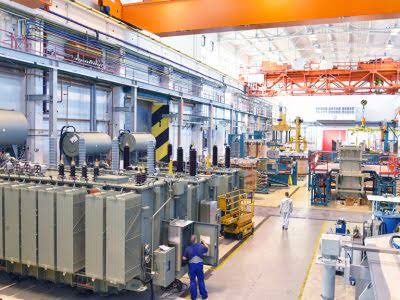Content

It helps identify the specific cost assigned to each process. It enables the management to further decision making. This version assumes that all costs, whether from a preceding period or the current one, are lumped together and assigned to produced units. You may find that the case for your business is clear cut, and that one or the other of job/process costing is clearly the superior choice for you.
Why Use Process Costing?
Process costing is the logical choice for keeping tabs on product costs in industries where the individual units of output are uniform and individually not worth a great deal — such as reams of paper or bottles of soda — and where it’s impossible or difficult to trace production costs for each individual unit. Instead, the cost of goods manufactured (COGM) is produced using process costing.
Process costing is used most often when manufacturing a product in batches. Each department or production process or batch process tracks its direct material and direct labor costs as well as the number of units in production. The actual cost to produce each unit through a process costing system varies, but the average result is an adequate determination of the cost for each manufactured unit. The cost flows in a process costing system are similar to the cost flows in a job costing system. Each production department has its own work-in-process inventory account when using process costing. Direct materials are materials that are consumed during the manufacture of a product.
Definition of Process Costing
Explain how the CEO and CFO expect to increase profit for the year by boosting production at the end of March. Assigning Costs to Completed Units and to Units in Ending WIP Inventory. The following information is for the Painting department for the month of January. The following information process costing pertains to the Finishing department for the month of June. Reports can be easily combined to provide a side-by-side analysis from one period to the next. Using a simple example to explain this concept, assume 30 students attend school and each takes half a full load of classes.
This information is reported as the work-in-process on a company’s balance sheet. Inaccurate work-in-process accounts may also result in distorted finished https://www.bookstime.com/ good totals. This creates a difficult process for managing inventory and determining how many products the company has to sell in the open marketplace.
Steps of Process Costing
The incomplete units are assumed to be finished before the new units are added to the process. The direct costs going into any process are readily available as the sum of raw material and labor. Also, indirect costs such as electricity, rentals, repairs, and depreciation can easily be mapped to a process. Several methods such as activity-based costing , absorption costing, and marginal costing exist to easily determine the cost consumed in each process. Materials, labor, and factory overhead costs are added in each department.
5 Situations Where Hiring A Fiduciary Is Money Well Spent – Financial Advisor Magazine
5 Situations Where Hiring A Fiduciary Is Money Well Spent.
Posted: Wed, 28 Dec 2022 12:48:18 GMT [source]
The specific function costs are called direct labor and are assigned to work‐in‐process inventory. The general factory labor costs are indirect labor costs that are added to factory overhead. Unlike the accounting for payroll under the job order cost system, the employee does not have to be physically involved in making a product to be assigned to a specific function.
Calculate Material Costs
The sum of the departmental work in process costs is the total cost of the batch that is transferred to Finished Goods. In a process company, factory overhead represents those costs not directly assigned to one function. The journal entries that follow illustrate the accounting for general overhead costs.
Such costs can be determined by identifying the expenditure on cost objects. This calculation is simple as compared to any other method.
Chapter 17 Solutions
Having an accurate understanding of your business costs is incredibly important in creating a profitable and successful endeavor. Depending on what industry you are in and how you are operating, you will likely find one or the other to be a more suitable option for all of your costing purposes. Unless you offer a variety of both customised and standardized products, you are unlikely to need to use both types of costing processes. We can allocate using a couple of different methods of allocation. Some costs may be allocated based on employee hours.
- Disposal cost of normal loss is an addition to costs to the process and debited to process account.
- Assigning Costs to Completed Units and to Units in Ending WIP Inventory.
- This makes it easier to evaluate deviations in process costs and quickly call out on drop-in process efficiencies or a sharp rise in material prices.
- The fully integrated financial management solution helps businesses accelerate their financial close, provides strong expense management and real-time visibility into the company’s financial performance.
- We return to Desk Products, Inc., throughout the chapter to explain how process costing systems work.
Still, this method has both advantages and disadvantages. It can be difficult to accurately assign costs to work in progress, for example. Examples of the industries where this type of production occurs include oil refining, food production, and chemical processing. For example, how would you determine the precise cost required to create one gallon of aviation fuel, when thousands of gallons of the same fuel are gushing out of a refinery every hour? The cost accounting methodology used for this scenario is process costing.
Steps for Process Costing
Case 1 – Process costing with zero beginning and zero ending work-in-process inventory of SG-40. (That is, all units are started and fully completed within the accounting period.) This case presents the most basic concepts of process costing and illustrates the feature of averaging of costs. As the factory labor payroll is prepared and recorded, the payroll costs are split between those employees who work in specific functions and those involved in the general functions of the factory.

Each product you create will inevitably use different quantities of material, take a variety of time lengths to complete , and generally cost differing amounts depending on the order you receive. The second method is called the step-down method. This method is more complicated than the direct method, as it also takes into account the services that one service department offers another. Custodial services on the other hand, may be better allocated based on the square footage of each of the operating departments. If the press area of the Ultimate Planner business occupies 10,000 square feet, while the packaging area only occupies 2,000 square feet, it probably takes more custodial effort in the press area!
Deja una respuesta